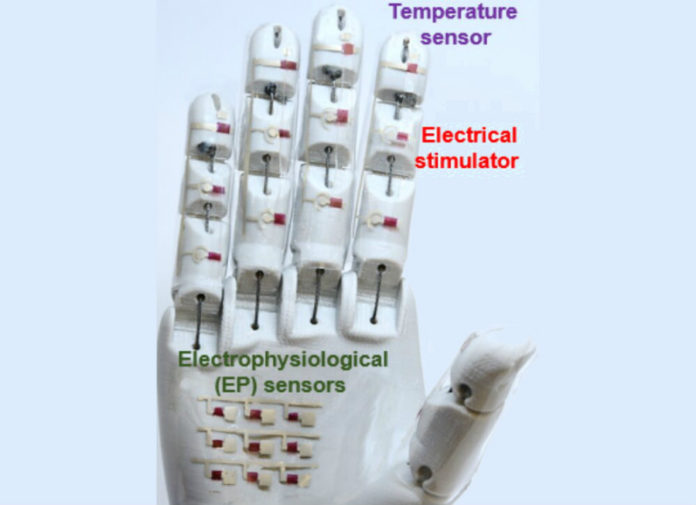
Accurately diagnosing and treating patients who are halfway around the world is going to be an easy task with the latest Medical robotic hand that has special skin. A team of researchers has made this possible with a new generation robotic hand that has smart electronic skin.
About the smart skin
The gadget uses a new invent of a rubbery semiconductor for its skin which has “high carrier mobility” and can assess important diagnostic data. ‘Carrier mobility’ is the speed at which a charge can go through a certain material. And this new method is said to be more efficient than current technologies in use.
Conventional semiconductor materials are usually brittle and need extra steps to make sure they do not easily break up when applying for stretchy electronic devices. Another main drawback is the low carrier mobility.
It was only last year that this team of researchers created an efficient rubbery semiconductor with higher carrier mobility by adding tiny metallic carbon nanotubes in the material. Its performance was still intact even when the material was stretched up to 50%. Even the human skin could only be stretchable up to 30% without tearing.
This special semiconductor is also easily scalable in manufacturing. According to the researchers, the semiconductor material first has to be dissolved in a solution. Then the solution is dropped on the water to make it spread. After that, the chemical solvent evaporates, leaving only the improved semiconductor. This method is paving way for future composite films that are high quality, fully rubbery semiconductors. And their applications would be endless.
The use of this rubbery material on electronic devices may lead a path to novel state of art soft electronics that can mimic biological tissues. Researchers say by creating the medical robotic hand and the smart skin, they wanted to demonstrate the potential their technology could achieve.
The research has been published in the journal Science Advances.

